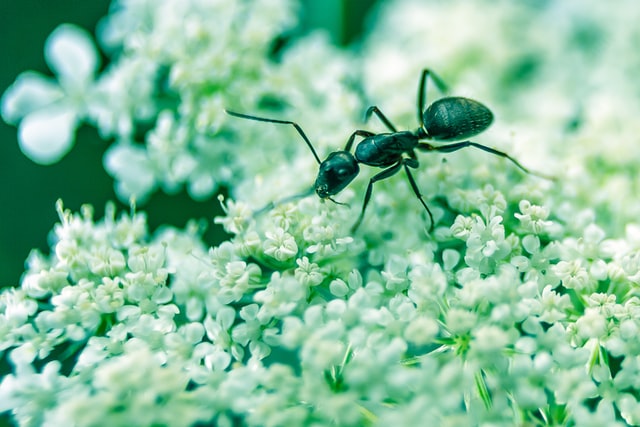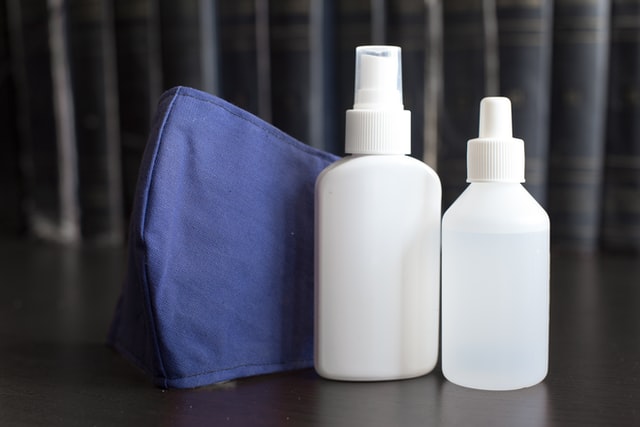This excerpt has been taken from “Landscape Planning Practical Techniques for the Home Gardener” written by “Judith Adam”. Horticultural Sprays, are applied as a dilute spray on plant surfaces to control insects and mites. They are also sometimes included in tank mixes as a surfactant. “Tree Removal in Hayward CA“, helps you avail more information on such sprays. Thanking the author for this piece of information on safeguarding the agriculture.
Insect Sprays
Homemade pesticides are most effective when used as repellent sprays before large infestations develop. Large populations of destructive bugs can be prevented when repellents are applied regularly to plants that destructive pests are known to infest. It’s important to treat only the plants that are frequently damaged by insects, because repellents will kill or discourage beneficial insects, too. And remember, perfection has no place in the garden. It’s important to work at acquiring a little tolerance for damage.
Whether you are using commercial or homemade preparations, label all bottles and containers clearly with waterproof marker.
Pepper and Garlic spray
This spray contains enough hot volatile oils to burn the chewing and sucking mouth parts of insects, but it is very hot and will also burn human skin, so be careful not to splash your-self. Wearing rubber kitchen gloves and a pair of shop safety glasses is a reasonable precaution.
½ cup (125 ml) fresh hot peppers
2 large cloves fresh garlic
2 cups (500 ml) water
1 tbsp (15 ml) vegetable oil
Liquefy ingredients in a blender or food processor and strain the mixture through a kitchen sieve lined with a handkerchief. Transfer to a spray bottle and label. Spray the upper and lower leaf surfaces of plants that show insect damage.
Boosted Insecticidal Soap
Commercial insecticidal soap is more effective than anything you can make from dish detergent, and won’t harm tender plant tissues. The soap mixtures is most effective when “boosted” with rubbing alcohol (isopropyl alcohol), which removes the waxy cuticle covering from soft-bodied insects like aphids, white flies and leaf hoppers. This allows the soap to do its job effectively, but it won’t have as much effect on hard-bodied insects like earwigs and Japanese beetles.
2 cups (500 ml) prepared commercial insecticidal soap.
1 tbsp (15 ml) rubbing (isopropyl) alcohol
Mix up commercial insecticidal soap according to product instructions and put it into a clearly labeled spray bottle. Add the rubbing alcohol and mix. Spray affected plants thoroughly.
Anti-Ants Spray
Ants dislike citrus oils and will abandon their nests to avoid them, or you can rely on the sweetened borax paste, which the ants will carry back to the nest. Simply flooding with a hose also works well because ants can’t swim and a torrent of water will disrupt the nest and send them scattering.

3 pieces of citrus fruit (oranges, grapefruits or lemons)
3 cups (750 ml) boiling water
Use a citrus zester or sharp paring knife to remove just the thin outer peel from the citrus fruit. Put the peels into a bowl and pour the boiling water over them. Leave to cool. Use the cooled citrus infusion to splash onto unwanted ant nests in lawns or garden beds.
Anti-Ants paste
Ants will go for this sweetened paste which will poison their nest when they carry it back. Borax soap is available as a laundry product is supermarkets.
1 tbsp (15mL) borax soap Molasses or honey
Mix the borax soap with enough molasses or honey to form a paste. Put small dabs of the paste on pieces of waxed paper and leave them close to unwanted anthills. This will also interest bees and wasps, so wait until night to eventually remove the paste.
Disease Sprays
Fungus diseases are caused by microscopic spores that land on leaf tissue, where they take root. Eventually brown spots, streaks or blotches indicate the infection, but by that time it’s well established.

To prevent fungus diseases like black spot on roses from getting started, the preventative spray must be used in advance of hot and humid weather, as a preventative measure.
Preventative Black-Spot Spray
1 tsp (5 ml) baking soda
4 cups (1 l) water a few drops of liquid soap
Mix the baking soda with the water and add a few drops of liquid soap as a sticking agent. Use the spray every 7 to 10 days on rose foliage, starting in midsummer.
Continue reading our next article on Plant Selection
